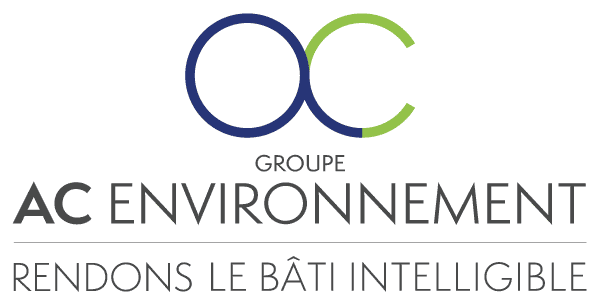Nothing is more difficult within a business than circulating information about progress initiatives and transformation projects. And the reason why this is a difficult job is that the various programs, procedures and mechanisms each rely on their own organisational silos. When we talk about deep-rooted and lasting changes to a business, the greatest issue is not so much finding specialists to handle any given troublesome aspect; it is having a complete overview able to support the necessary synergies and thus achieve the strategic objectives. A holistic approach could provide the answer, but what does it actually mean?
Organisational transformation: the current state of play
It has to be acknowledged that despite the best of intentions, organisations struggle to implement deep-rooted and long-lasting transformation policies. The numerous continuous improvement, quality and innovation processes all have their own roadmap and run to their own timescale. As a result, operational staff no longer know where to start and change management becomes a real headache.
All too often, these malfunctions are the result of internal power struggles, rigid compartmentalisation of functional departments and, even worse, sometimes management egos desperate for recognition and so constantly claiming control over everything in their scope. The quest for individual performance then supplants efforts towards collective performance, and thus encourages solitary working and an uncompromisingly top-down management culture, all of which inevitably reinforces organisational silos.
How can this unhappy state of affairs be fixed? The best solution is to prioritise collective intelligence, and this is best achieved by ensuring proper representation of all aspects that are affected. The priority is to give everyone a clear picture and enable them to play their role by taking charge of the necessary change management. However, implementing a more participative culture based on collaboration requires a solution to our initial problem, i.e. the proper circulation of information. First and foremost, it is therefore essential to be in a position to use a comprehensive, shared reference system for all transformation initiatives, as we have explained in this infographic.
Improved collaborative working is a crucial key success factor in bringing about lasting organisational change. When dealing with complex situations, decisions taken behind closed doors, at the top of the management pyramid, are not always appropriate to the reality at grassroots. This being so, how can your decision-making process be adapted to boost the role of collective intelligence?

The holistic approach through “Ways of working”
Businesses launching a plethora of such processes inevitably lose sight of the bigger picture and start to view projects in a somewhat blinkered way. Governance of all these processes then leads to a colossal amount of work on communication, reporting and change management.
Bill Hewlett and Dave Packard, founders of the famous hardware manufacturer Hewlett Packard, understood these issues perfectly back in the day, and established an in-house code of practice known as the “HP Way”, the aim of which was to create an organisation that encouraged teamwork to the fullest possible extent. The “HP Way” accordingly established five core values that each employee was expected to embody:
- The importance of respect for the individual,
- The value of leadership,
- The importance of integrity,
- The power of teamwork,
- The need for adaptability.
The impact of this culture surely has to be recognised, bearing in mind how Hewlett Packard successfully became the market leader in so many areas. It explains why nowadays many companies are also setting out their own “Ways of working” to adapt their management and governance methods for transformation processes to the challenges they pose. For best results, there are typically three aspects to these “Ways of working”.
The “Way to go”
The business must adopt a holistic approach to its transformation, an approach that can be understood by all employees. This is based on building a comprehensive reference system holding its commitments and all those aspects affected by the various processes being implemented. For example, there is no need to have five different aspects split across various departments to measure customer engagement in each; one reference will suffice and prevent employees from spreading themselves too thin. This reference system will evolve over time, and be fine-tuned in line with the maturity of the business and, crucially, staff’s acceptance.
The “Way to act”
Each process leads to the implementation of practical measures, having the effect of changing the business, and therefore with an impact on one or more aspects in the reference system. These practical measures can be categorised on the basis of their contribution to the current standards, rules and processes followed in the business:
- Strengthen the way things are done currently, by dealing with discrepancies and preventing others occurring.
- Improve the way things are done by making them more efficient, more straightforward, and reducing the resources consumed.
- Transform the way things are done by adapting to changes in the surrounding environment.
The “Way to be”
This last component is essential to success, because it determines the mindset within which activities are undertaken. No program should be started without securing complete understanding and acceptance of the “Ways of working” from the employees concerned. Every process can then determine which aspects it intends to influence, and the extent of that influence, using the three categorisations of measures taken.
It would be good not to reinvent the wheel with every new program. It would be good not to lose employees along the way under the combined weight of new processes. The holistic approach, with its consideration of issues across entire systems, makes progressive, lasting completion of successful transformation projects possible, which is vital in our current economic environment.
To get a head start in terms of competitiveness, download our guide to blending performance, progress and collaborative working:


AC Environnement’s ambitious transformation project
A major name in building inspection in France, AC Environnement has seen impressive growth since it was formed. To maintain this momentum, the business has begun an ambitious transformation program to remain 10 years ahead of the competition, working on five main strategy areas. To find out more, read AC Environnement’s customer testimonial on managing its transformation project with IDhall.




